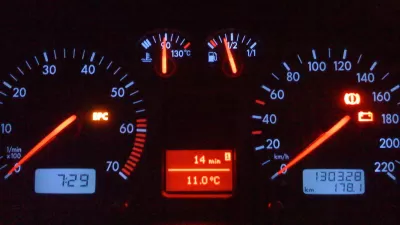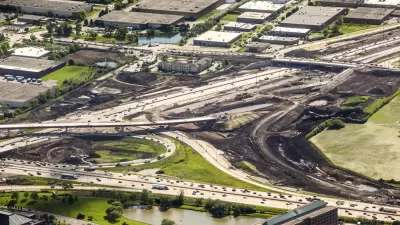U.S. Public Interest Research Group does a state-by-state analysis of the decline in driving in an attempt to determine it's chief causes.

Ryan Holeywell writes that U.S. Public Interest Research Group (PIRG) researchers first looked at what many (e.g. Wendell Cox in his Dec.,2011 blog) may have suspected to be the most common reason attributed to the decline in driving, "the effect of the sluggish economy. Owning a car and paying for gas isn't cheap, so it's logical to assume when times are tough, people would cut back on automobile trips".
"There's no real relationship at all (with the states hit the hardest by the recession)," says Phineas Baxandall, senior tax and budget policy analyst at U.S. PIRG. "When people dismiss it, they say 'it's the economy.' But if that was the case, you'd expect states hit the hardest by the economy to have reduced driving the most. That's not at all the case." (Baxandall also notes that the decline in driving pre-dates the recession by several years.)
In fact, only four states saw per capita driving increases: Alabama, Louisiana, Nevada and North Dakota. From the press release:
- The states with the biggest reductions in driving miles generally were not the states hit hardest by the economic downturn. The majority—almost three-quarters—of the states where per-person driving miles declined more quickly than the national average actually saw smaller increases in unemployment compared to the rest of the nation.
However, Baxandall doesn't dismiss the economic relationship altogether.
"While certainly a contributing factor and an economic rebound could be expected to have some upward lift on driving, the recession does not appear to be the prime cause of the fall-off in driving over the past eight years," Baxandall writes.
According to Holeywell, "(t)he implications of the study could be big. If the decline in driving isn't largely the result of the recession, then transportation planners might want to think twice before assuming driving miles will rebound if the economy picks up."
The Hill's Keith Lang emphasizes that point, pointing to why PIRG titled its report, "Moving Off The Road". Baxandall explains:
“There’s a national decline in driving that is shared by almost every state. It’s time for policy makers to wake up and realize the driving boom is over. We need to reconsider expensive highway expansions and focus on alternatives such as public transit and biking — which people increasingly use to get around.”
If you're looking for a single reason for the decline in driving, this report won't provide it. "All in all, there appears to be no single factor behind the average amount of driving for residents in any given state," according to Baxandall. Whatever the cause(s), "per capita vehicle miles traveled peaked in 2004 and have fallen each of the last eight years, amounting to a 7.4 percent dip in that time", writes Holeywell.
AP's Joan Lowy in The Detroit News on August 30 writes about another study by Transportation Department economists Don Pickrell and David Pace that confirms PIRG's findings.
A flexible chart accompanies the Governing article showing the following data for all 50 states plus District of Columbia:
- per capita Vehicles-Miles-Traveled in 2011,
- % change in per capita VMT, 2005-2011
- peak year for per capita VMT
- peak year annual VMT per capita
FULL STORY: The Mystery Behind America's Decline in Driving

Alabama: Trump Terminates Settlements for Black Communities Harmed By Raw Sewage
Trump deemed the landmark civil rights agreement “illegal DEI and environmental justice policy.”

Study: Maui’s Plan to Convert Vacation Rentals to Long-Term Housing Could Cause Nearly $1 Billion Economic Loss
The plan would reduce visitor accommodation by 25% resulting in 1,900 jobs lost.

Planetizen Federal Action Tracker
A weekly monitor of how Trump’s orders and actions are impacting planners and planning in America.

This Toronto Suburb Has More Bus Riders Than Columbus, Ohio
Brampton, Ontario used gradual improvements in service to prove that if you build it, they will ride.

Paris Bike Boom Leads to Steep Drop in Air Pollution
The French city’s air quality has improved dramatically in the past 20 years, coinciding with a growth in cycling.

Why Housing Costs More to Build in California Than in Texas
Hard costs like labor and materials combined with ‘soft’ costs such as permitting make building in the San Francisco Bay Area almost three times as costly as in Texas cities.
Urban Design for Planners 1: Software Tools
This six-course series explores essential urban design concepts using open source software and equips planners with the tools they need to participate fully in the urban design process.
Planning for Universal Design
Learn the tools for implementing Universal Design in planning regulations.
Smith Gee Studio
Alamo Area Metropolitan Planning Organization
City of Santa Clarita
Institute for Housing and Urban Development Studies (IHS)
City of Grandview
Harvard GSD Executive Education
Toledo-Lucas County Plan Commissions
Salt Lake City
NYU Wagner Graduate School of Public Service





























